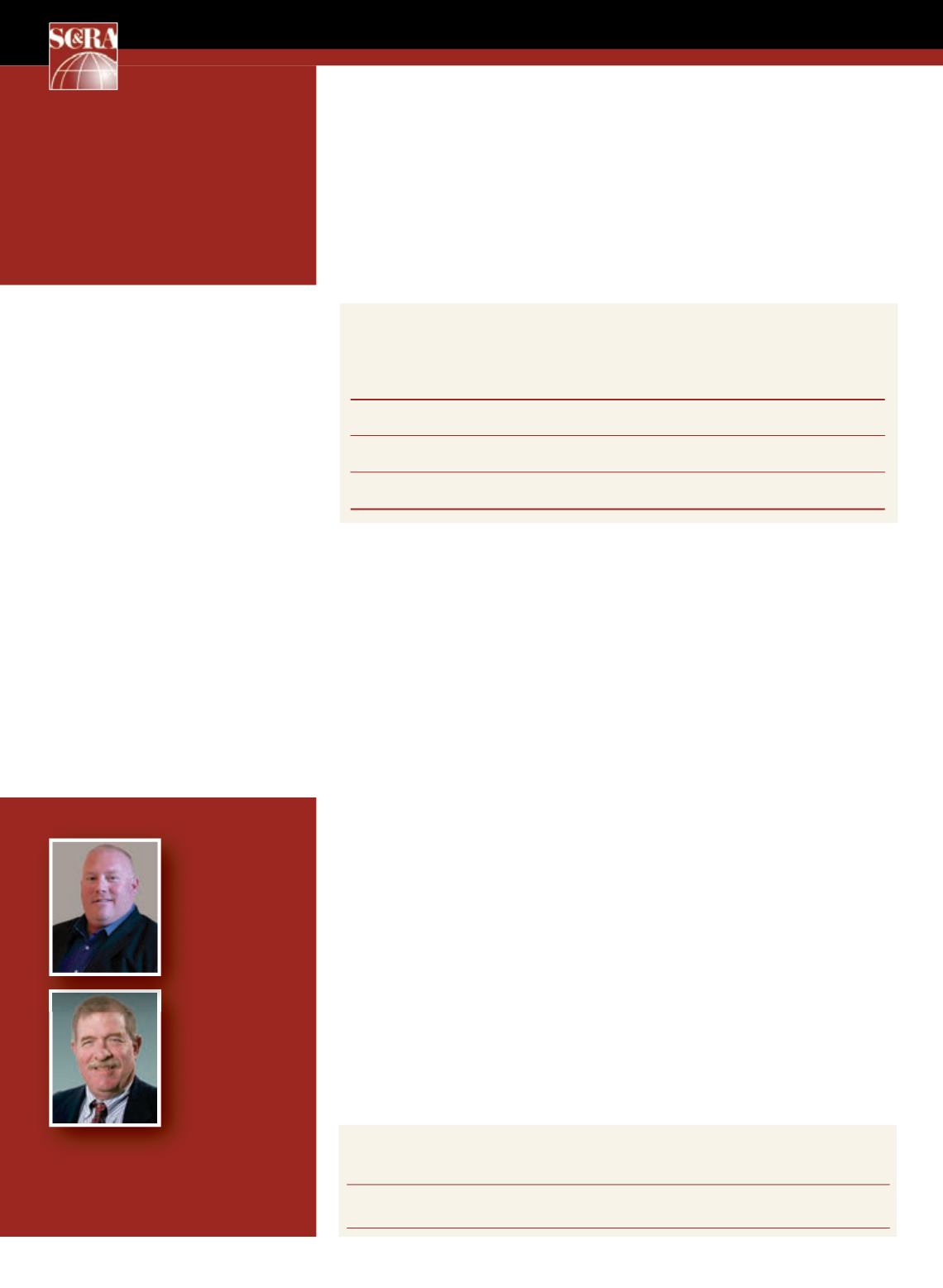
66
RISKMANAGEMENT
ACT
JUNE 2014
ChrisNelson
and
Robert C. Moore
discuss
what you should know
about DOT Drug and
Alcohol Compliance.
RANDOM:
CDL driversmust be randomly
tested throughout the year (382.305); an
employer who employs only himself/herself
as a driver, who is not leased to amotor
carrier, shall implement a random testing
program of two or more covered employees
in the random testing selection pool as a
member of a consortium (see 382.305
interpretation 11)
.
Establishing Random Testing Rates
TheDOTAgency that regulates a
specific transportation industry sets the
random testing rate. TheAdministrator
of eachDOTAgency is authorized
to either increaseor decrease the
randomdrug and alcohol testing
rates. To establish an appropriate rate,
Administrators use information reported
from thedrug and alcoholManagement
InformationSystem (MIS) form required
by49CFRPart 40 andother indicators.
The rates are always effective starting
January1of the calendar year. To check
for the current rate, visitODAPC’s
website at:
rates.html.
2014 DOT Random Testing Rates
The following chart outlines the annual
minimumdrug and alcohol random
testing rates establishedbyDOT for 2014.
The random rates are annualminimum
requirements. TheDOTAgency requires
adrug testing rateof 50percent and
an alcohol testing rateof 10percent.
An employerwith100 safety-sensitive
employeeswouldhave to ensure that
50ormore randomdrug tests and10
ormore random alcohol testswere
conductedduring the calendar year.
How are employees notified to report
for a random test?
Every employee shouldbediscreetly
notified according to your company’s
policy, but random testingmust also
be conducted in strict confidencewith
a limitednumber of peoplehaving
knowledgeof the selection list.
Why?Because it helpsmaintain the
element of surprise.
BEST PRACTICES:
Every employer should
have procedures in place to ensure that
each employee receives no advanced notice
of selection. But, be sure to allow sufficient
time for supervisors to schedule for the
administration of the test and to ensure that
collection sites are available for testing.
REASONABLE SUSPICION/REASONABLE
CAUSE:
Drivers who appear to be under
THEAUTHORS:
ChrisNelson
isDirector of Risk
Management,
Transportation at
NBISConstruction &
Transport Insurance
Services.
Robert C.
Moore
is
Transportation
ProgramManager,
NBISConstruction &
Transport Insurance
Services.
What tests are required
andwhen does testing
occur?
So inpart one of this two-part serieswe
answered thequestion “Am ICovered?”
Inotherwords - are you and/or your
employees subject to theDOTdrug and
alcohol regulations. If you concluded the
answerwas yes, this article (part two)will
help ensure that that you are conducting
the right test(s) and that your testing
program is following the guidelines set-
forth in the regulations.
What types of DOT tests
must I conduct?
PRE-EMPLOYMENT:
An employer must
receive a negative drug test result before
permitting a CDL driver to operate a CMV.
(382.301).
POST-ACCIDENT:
Drug and alcohol testsmay
be required after crashes according to the
following chart (382.303):
NOTE:
This is the final article in a
two-part series on DOT Drug and
Alcohol Compliance. The first article
was published in theMay issue of
ACT
.
WHEN IS TESTINGREQUIRED
CITATION
TESTMUST
ISSUED TO THE
BE PERFORMED
TYPE OF ACCIDENT INVOLVED
CMVDRIVER
BY EMPLOYER
■
Human Fatality
Yes
Yes
No
Yes
■
Bodily InjuryWith ImmediateMedical
Yes
Yes
Treatment Away From the Scene
No
No
■
Disabling Damage to AnyMotor Vehicle
Yes
Yes
Requiring TowAway
No
No
DOT AGENCY
2014RANDOM
DRUG TESTING
RATE
2014RANDOM
ALCOHOL TESTING
RATE
Federal Motor Carrier Safety
Administration [FMCSA]
50 percent
10 percent
Drug and
alcohol testing
requirements


